Feeling confident with our new anchor chain installed, we headed out to anchor and to begin our winter afloat in the Rio Guadiana.
We had some idea of what to expect, having talked to others who had previously wintered here. However, we know from experience that expectations and reality don’t always align. Sometimes they can turn out better than you hoped.
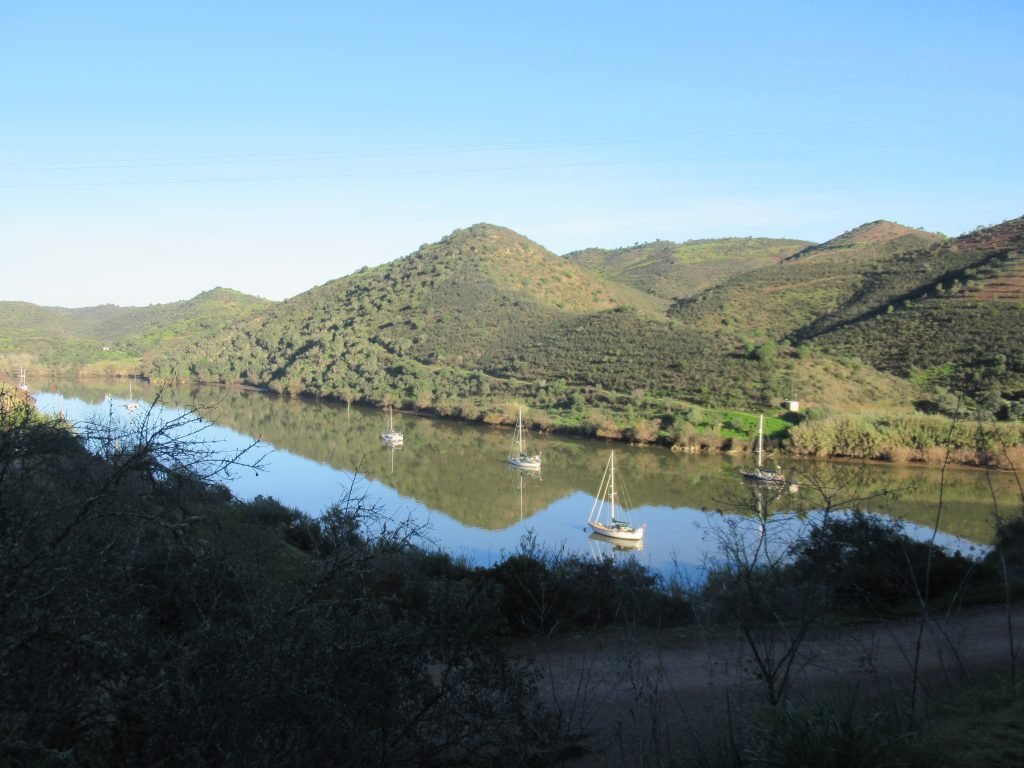
October
In a normal year, we could expect to be enjoying the Guadiana International Music Festival. However, like most public events this year, it too had fallen prey to cancellation by Covid. In its place, the organisers arranged a musical evening with performances from local musicians. And they invited us to play.
What a fabulous evening of local talent. We had Portuguese songs, some acoustic folk and rounded it all off with some Elvis.

November
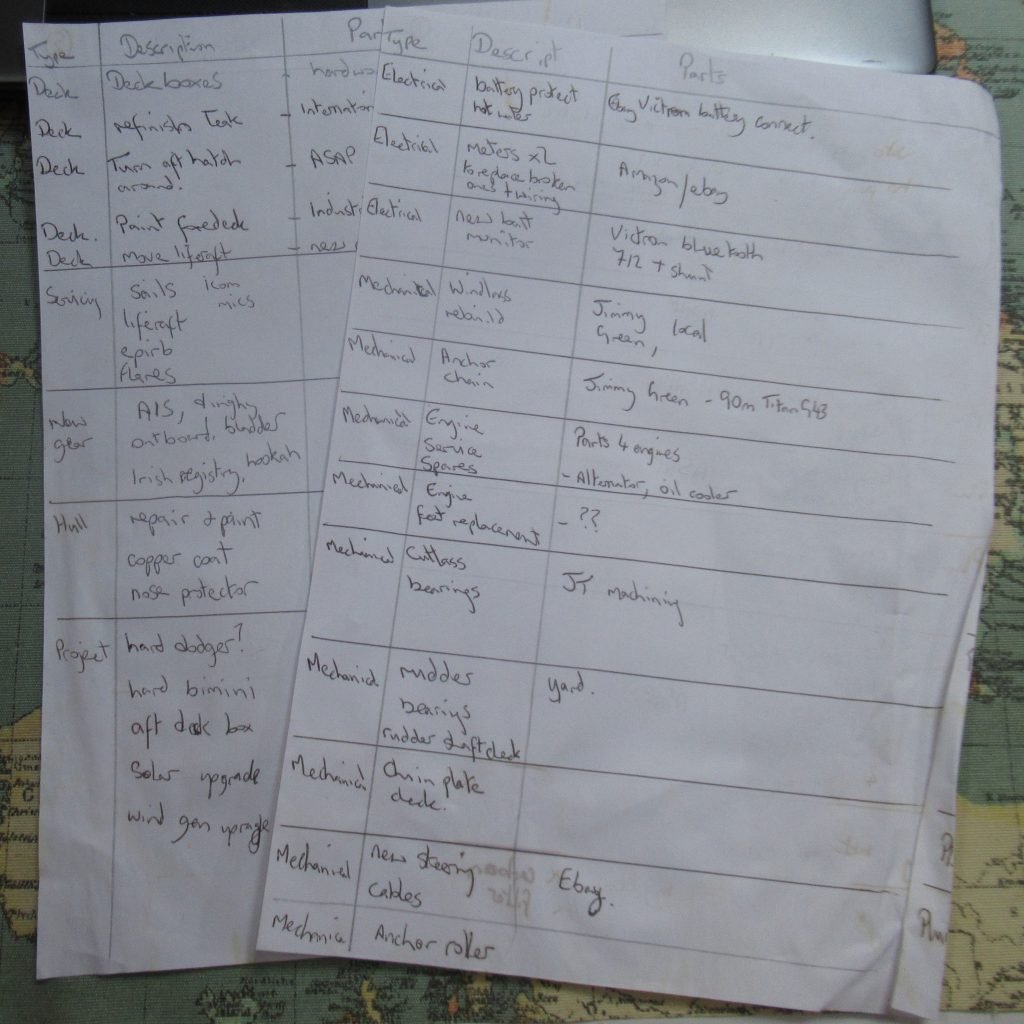
Boat job lists are a living, perpetual thing; as soon as one job is complete, at least one new one will have been added to the end.
During the summer, we’d reviewed our list, particularly looking for the jobs we needed to do out of the water.
Although we’ve since delayed going to a boatyard, there was plenty we could get on with during our winter afloat. We reviewed the list again and compiled a parts list, keeping the postal service busy.
Fridge Repairs
Our critical repair was the fridge. We’d been nurturing it through the summer, but its issues created a huge daily drain on our power supply. We’d kept up with the loss during the long, sunny days of summer, but during the shorter daylight hours of winter, we wouldn’t be making the same quantity of kilowatts. It was therefore essential we fixed this problem.
Our friends at The Sailing Nomads had suggested installing a filter/drier. We both have a FrigoBoat system, and Penguin Refrigeration in the UK supply a plug-in component. This would be the simplest step to take to try and fix it, otherwise, we would need external assistance.
The part arrived quickly. It was an even quicker job to install it. It comes precharged with R134A refrigeration gas with quick-connect valves that match the valves on the fridge compressor.
We waited on tenterhooks to find out if it had fixed the problem. We needn’t have worried. Over the next few hours, the fridge cycled as it should through 4 cycles. Now, why can’t every boat job be solved so easily?
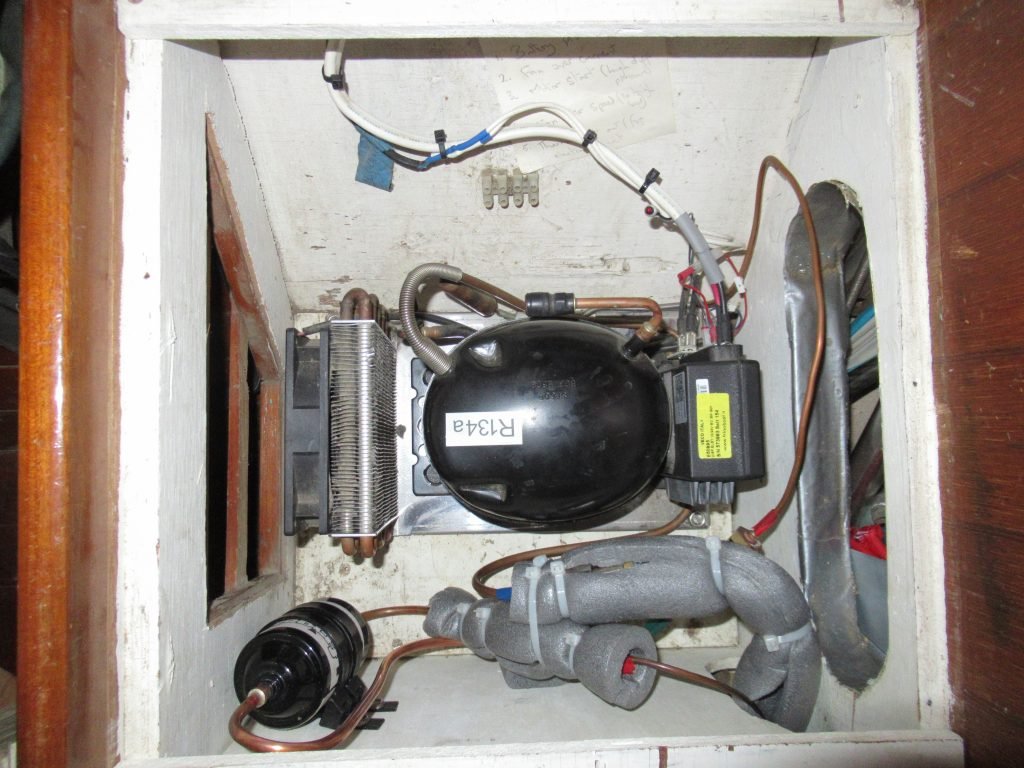
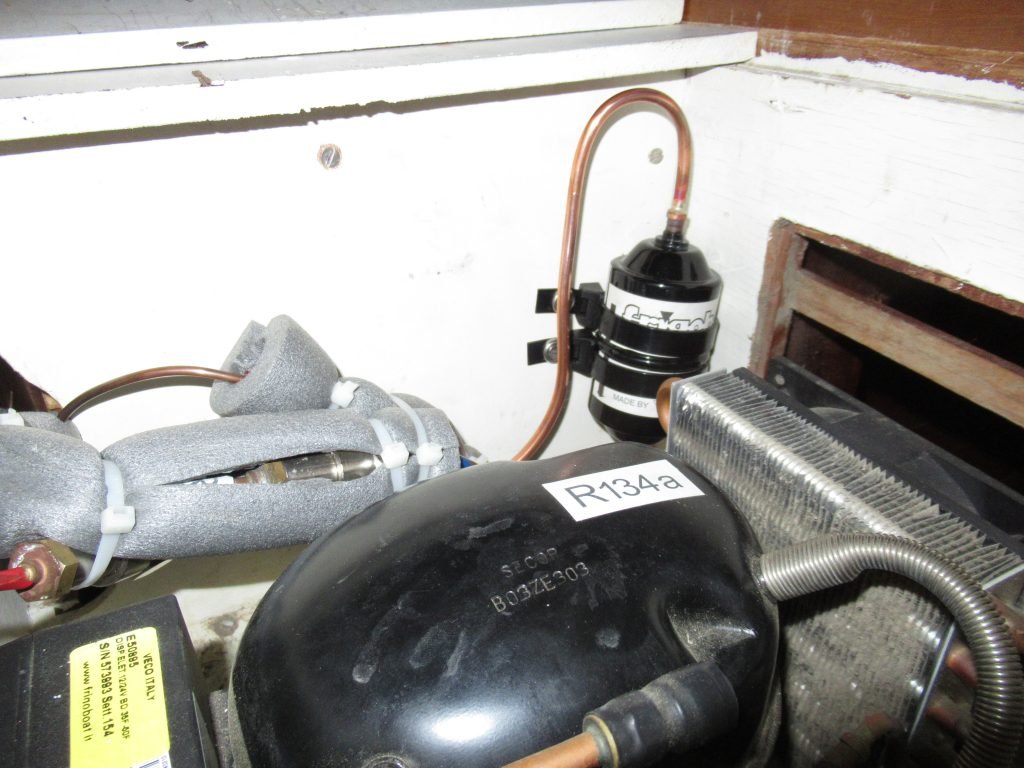
Autumn Arrives
November brought a change in weather. Grey, cool days and rain replaced the high heat of summer that had parched the land. We experienced our first misty day, where the fog hung low on the river until early in the afternoon.
Some rain was good. Brown hillsides morphed into green. Dried-out riverbeds became babbling brooks as signs of autumn spread across the land. Particularly obvious were the many varieties of mushrooms pushing their heads through the soft earth. Unfortunately, none of them were edible; well, not if we didn’t want sore stomachs.
Winter Routines
Life settled into a routine. Saturday morning is market day where we stocked up on a week’s worth of fruit and veg. After shopping, we’d gather at an outdoor cafe that overlooked the river, coffees turning into beers as the afternoon went on.
Tuesday evenings were music night, where anyone was welcome to play a few tunes. It encouraged me to free my long neglected ukulele from its case.
Sundays and Wednesdays became my walking days. I released Colin from duty as my reluctant hiking companion and joined a small group to head out into the rolling hills. Distances got longer as we explored the beautiful countryside.
Water is free from the pontoons on both sides of the river. Most times when we went ashore, we took our empty water cans with us. This meant we kept on top of our usage. I preferred using 5 litre bottles that I could easily carry, although occasionally Colin would take our 20 litre cans to make up for those times when we used more water, such as when showering or doing laundry.
At times we could almost forget there was a pandemic going on. However, Covid cases were beginning to ramp up in Portugal, particularly in the more populated north. The government imposed travel restrictions in the high-risk areas, but, in Covid free Alcoutim, we had more freedom.
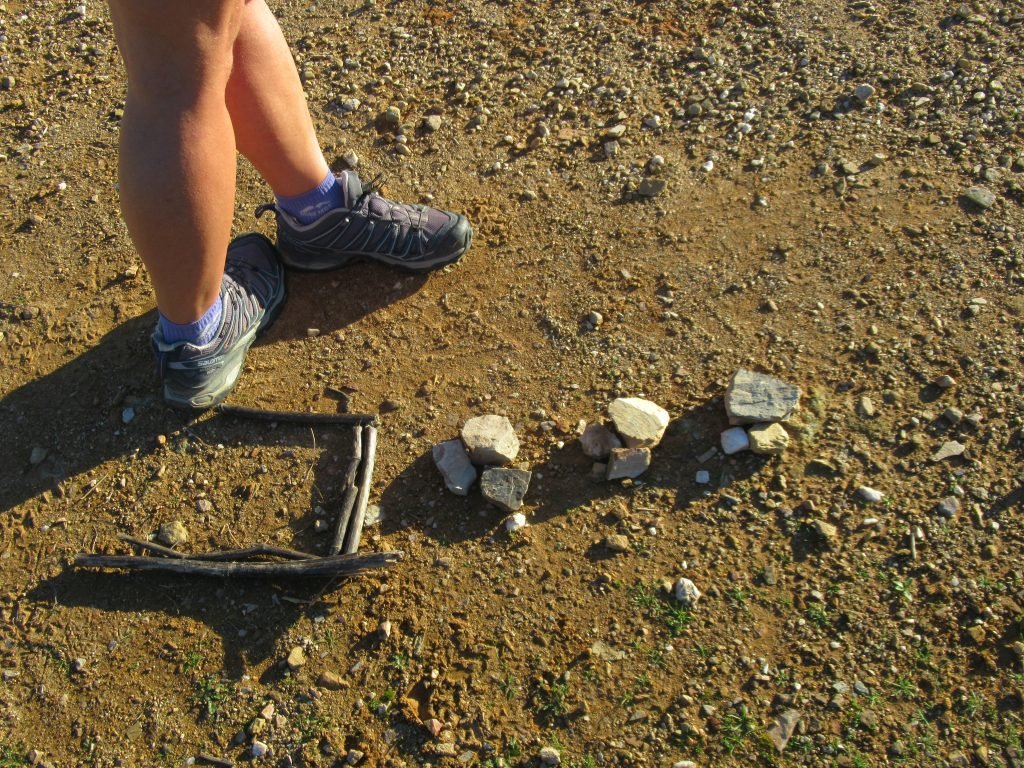
December
The North Wind Doth Blow
The cold weather became much more noticeable in December. Thinking back to our winter in Lagos Marina in 2014, we remembered warm, sunny days turning cold as night fell. Cold meant overnight temperatures of around 10C, rather than anywhere near freezing.
This year, although there were plenty of warm days, night time temperatures hovered around 5C.
We were extremely grateful for our Refleks diesel stove which we’d installed when we lived aboard in the UK. Back then it had quietly and efficiently kept us warm through some very cold winter months.
However, since reaching the Med, its use had reduced to a few hours a year due to the much milder climate. Also, we’d spent our winters in the Med in marinas, and we tended to use electric heaters instead.
During this winter afloat, the Refleks was to get much more use.

We Won’t Let the Cold Spoil Our Fun
Covid limited the number of people allowed inside a bar, so we piled on the layers and sat outside. And there was always the option to start earlier whilst the warm afternoon sunshine shone.
Unfortunately, cases of the disease were on the rise all around us. Spain imposed travel restrictions which meant visits to Sanlucar became closed off to us.
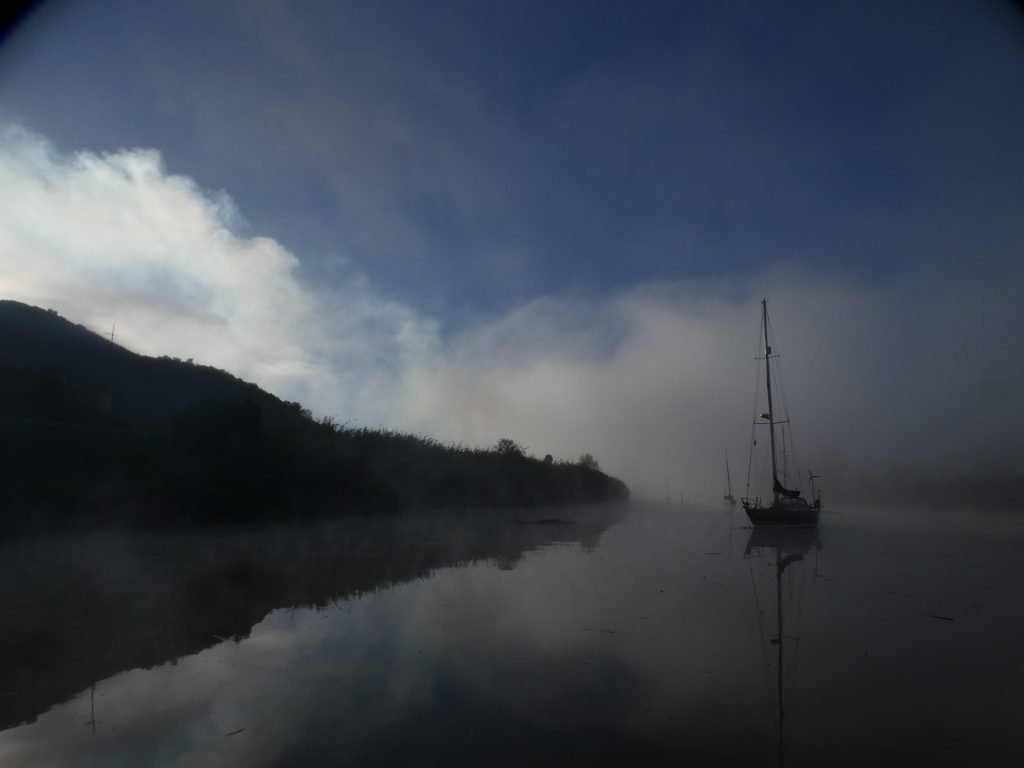
Boat Jobs
An Upgrade to our Outboard
For a winter afloat on the river, it became important to have a reliable outboard to get us safely to and from shore. We’d chosen to anchor north of the villages, where the shelter was better, but this meant a longer dinghy ride ashore. With the arrival of shorter days, many trips were made in darkness and the thought of breaking down wasn’t pleasant. We would often buddy dinghy back home with a neighbour boat, but that wasn’t always possible.
We bought our 4hp 4-stroke Yamaha back in 2008 to pair with a lightweight, 2.3m Excel inflatable dinghy. It provided adequate power to get us where we needed to go, albeit with an occasional soggy journey, when waves would splash over the dinghy’s sides. The dinghy lasted until 2015 when it was no longer able to hold out against the fierce Mediterranean sun. Catastrophic leakage occurred when the glue failed.
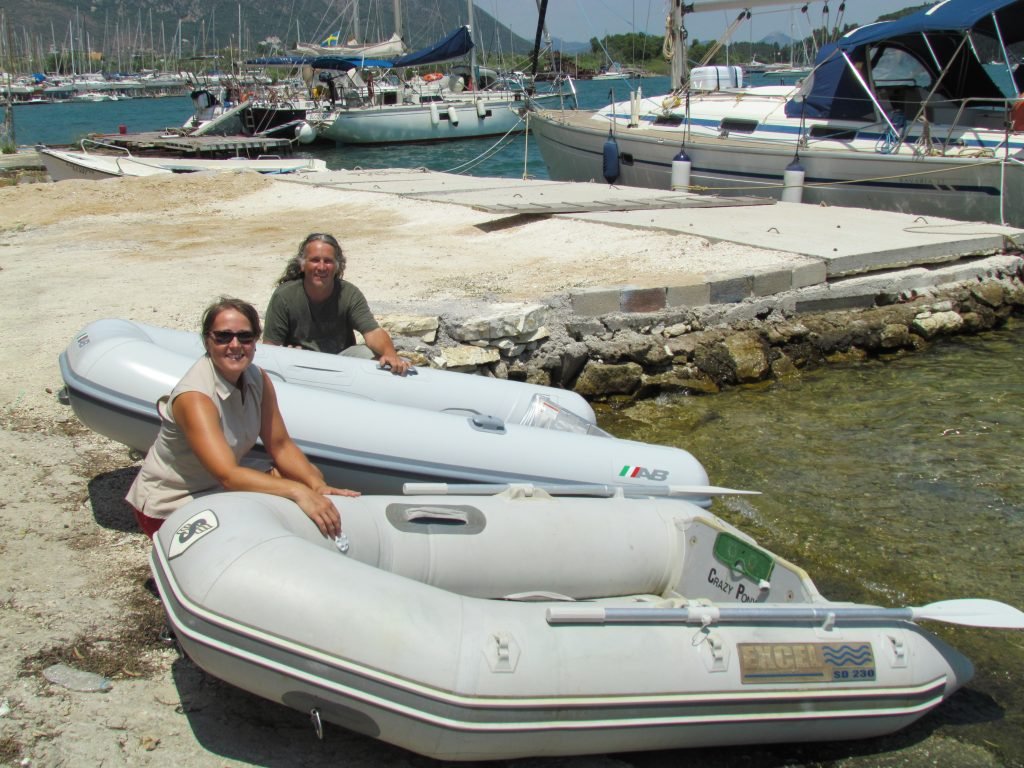
We Need More Power Captain!
It was an opportunity to upgrade to a 2.7m AB aluminium RIB. With its bigger tubes, there were no more soggy rides, but the outboard no longer really had enough umpf.
The most efficient phase of moving through the water is when a vessel gets on the plane. This is where it rides on the water surface rather than pushing through it. The outboard could manage this with one of us in the RIB, but never two up. We soldiered on, but always with an eye out for an outboard upgrade.
One issue was that a more powerful outboard would mean more weight. We could go up to 6hp with a negliable increase, but we were doubtful that the extra 2hp would bring much gain in performance. 8hp would be the ideal, but this would mean at least a 15kg weight increase. Quite the extra load to be hauling out on the dinghy davits.
Still, we kept on looking and the old outboard kept on chugging away as we traveled around the Med. That was until summer 2020 when we noticed an oil leak from the lower leg seal. We didn’t have the tools or knowledge or desire to sink money into something we wanted to replace. So, we attempted to eke out its life until we reached the boatyard.
4-Stroke or 2-Stroke?
But, those plans changed and we ended up wintering on the river. A working and reliable outboard now became essential. We switched our thinking to 2-stroke when we saw a second-hand one come up for sale nearby. An 8hp 2-stroke would double our power but without weight gain. We’d need to mix oil and petrol, but that’s not difficult.
Unfortunately, that sale didn’t happen, but shortly after, a boat on the river advertised a new 2-stroke outboard for sale. Alas, we missed out on that one by a few minutes! However, the jungle drums of the river went into action, and third time lucky, we’d made a deal. We were now the owners of a second hand Yamaha 8hp 2-stroke.
Crazy Horse really flies up and down the river now. The engine has started reliably every time. It is easier to start than the 4-stroke, giving me a much needed independence. I can now take myself ashore when I want and not have to worry about not being able to start the engine.
We also have the confidence that we could now power safely through bigger seas. It hasn’t happened often, but a couple of times degrading weather conditions have caught us out whilst ashore. An uncomfortable journey home followed, with water splashing over the sides, as the outboard struggled to push us over the waves.
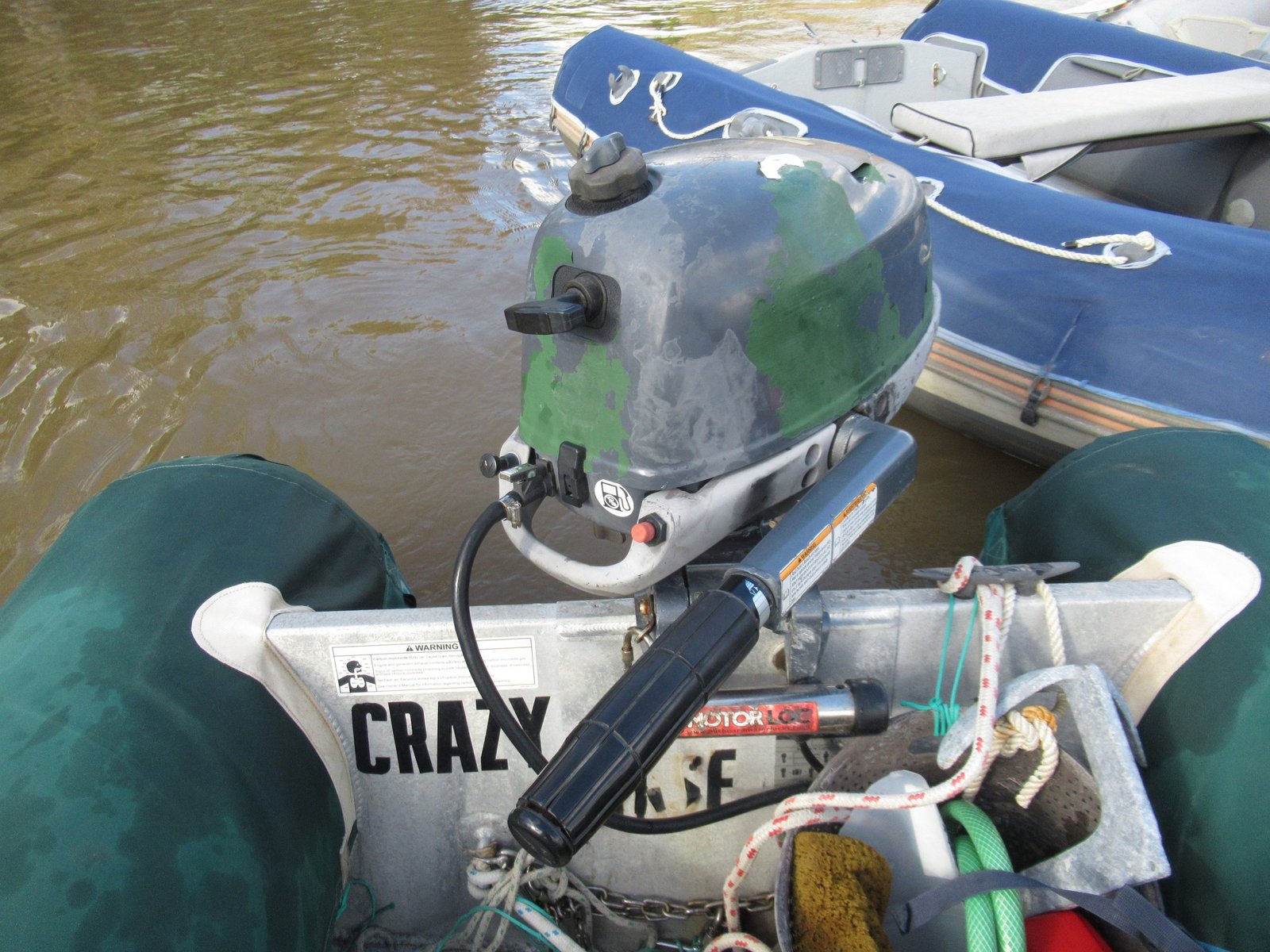
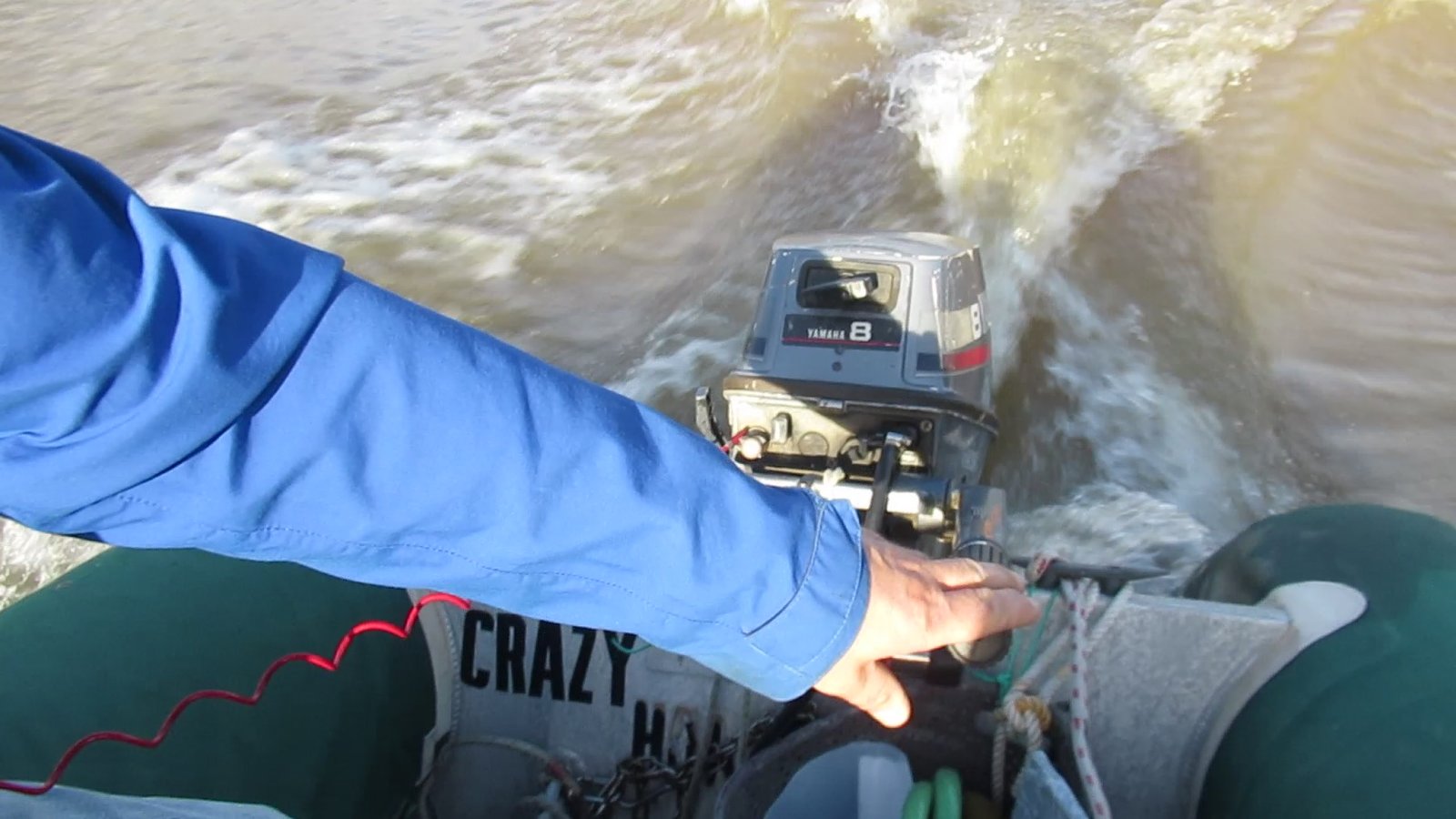
Floor Repairs
During the summer, we’d noticed a musty, earthy smell near the head door. On closer investigation, we found the wood under the door was rotten. We added another entry to the long list of jobs for when we were in the boatyard.
The source of the water was most likely from a leaking shower tray. With the boatyard delayed, and a need to shower inside, we set to fixing it.
Alas, like many boat jobs, it turned out to much worse than first thought.
Emerald’s floor is made from teak, which is a tropical hardwood, known for its durability and water resistance. However, the teak strip under the head door was soggy and soft to the touch. A piece crumbled off in Colin’s hands and we could actually squeeze a few drops of water from it. That’s how bad it was.
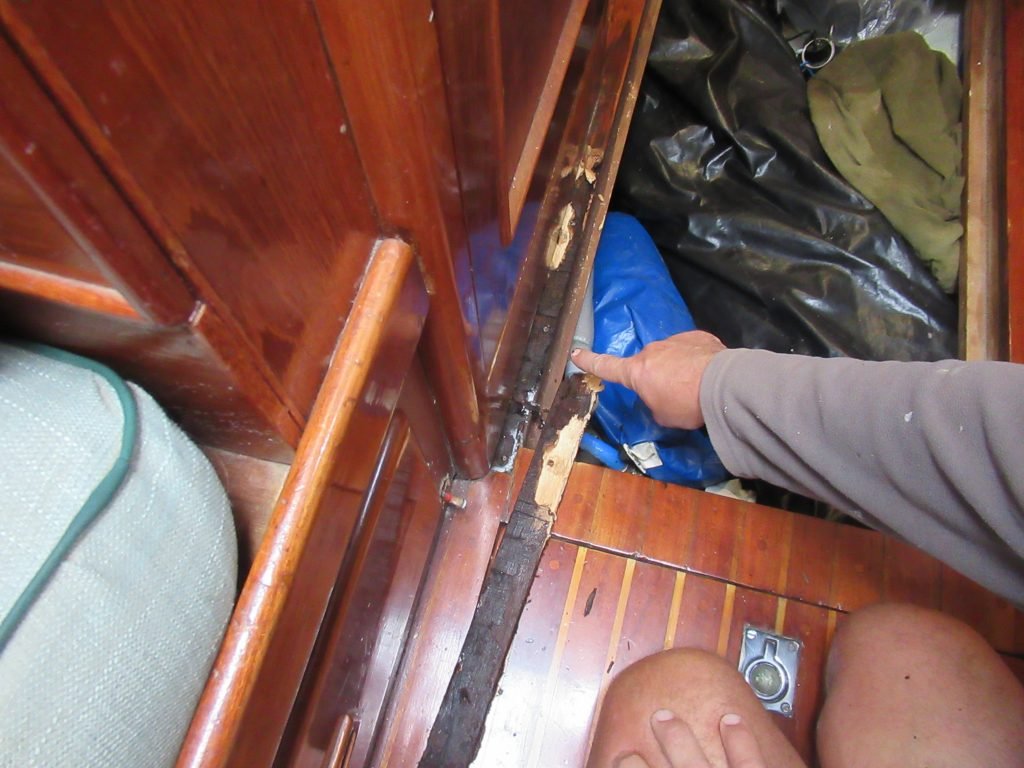
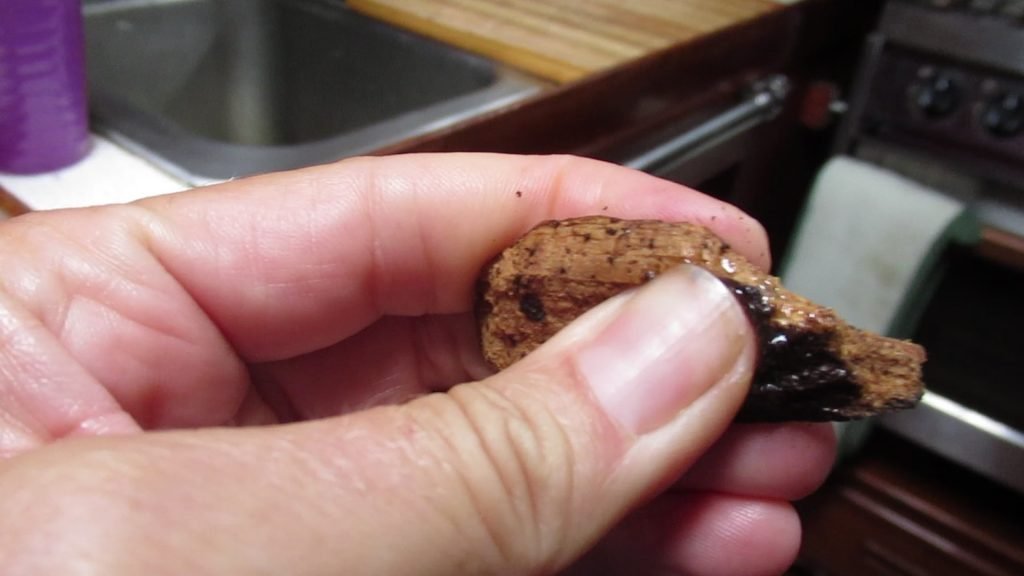
Finding the Leaks
The water was coming from two sources. The floor of our head has a teak grating, above a fiberglass tray. This collects water when we shower, which we then pump out. Previously, the shower tray had been screwed into the wooden support below with sealant sandwiched in between. However, due to age, the sealant was no longer effective. So, when we showered, water would trickle down the screw holes, make a path through the sealant and soak into the wood. Also, a previous repair had inadvertently created a water trap, where condensation and shower water could collect. With nowhere else to go, it soaked into the wood that supports the shower tray.
The first step of the repair involved chopping out the bad section of the floor and digging out all the rotten wood. There was much more rotten wood than we’d expected, resulting in a gaping hole.
Teak has become an endangered wood in the 40+ years since Emerald was built. Iroko is a more readily available wood, with similar properties to teak. We’ve already used it as a substitute for other jobs and fortunately, we’re hoarders and keep a stash of offcuts. This made up the bulk of the replacement, with a thin strip of teak on top (another hoarded offcut), to match the surrounding floor. We glued it in with thickened epoxy, sanded it smooth, and varnished.
That took care of the damage. To fix the source, we removed all the old rubber sealant, resealing with epoxy. The screws were also removed and the holes filled with thickened epoxy.
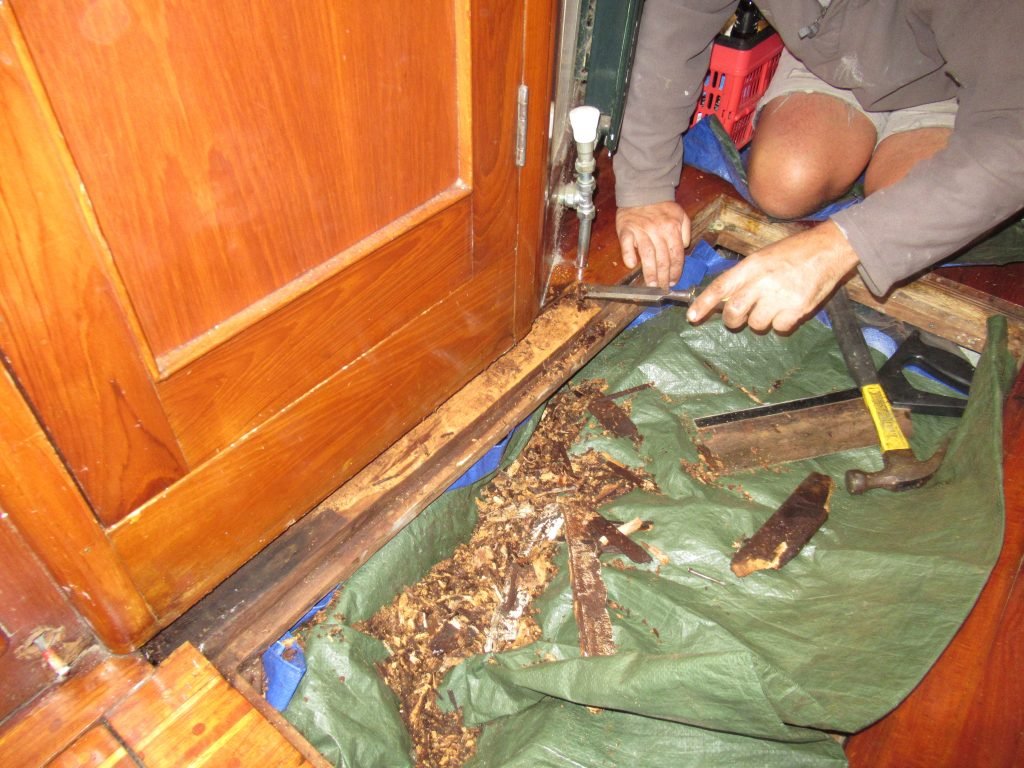
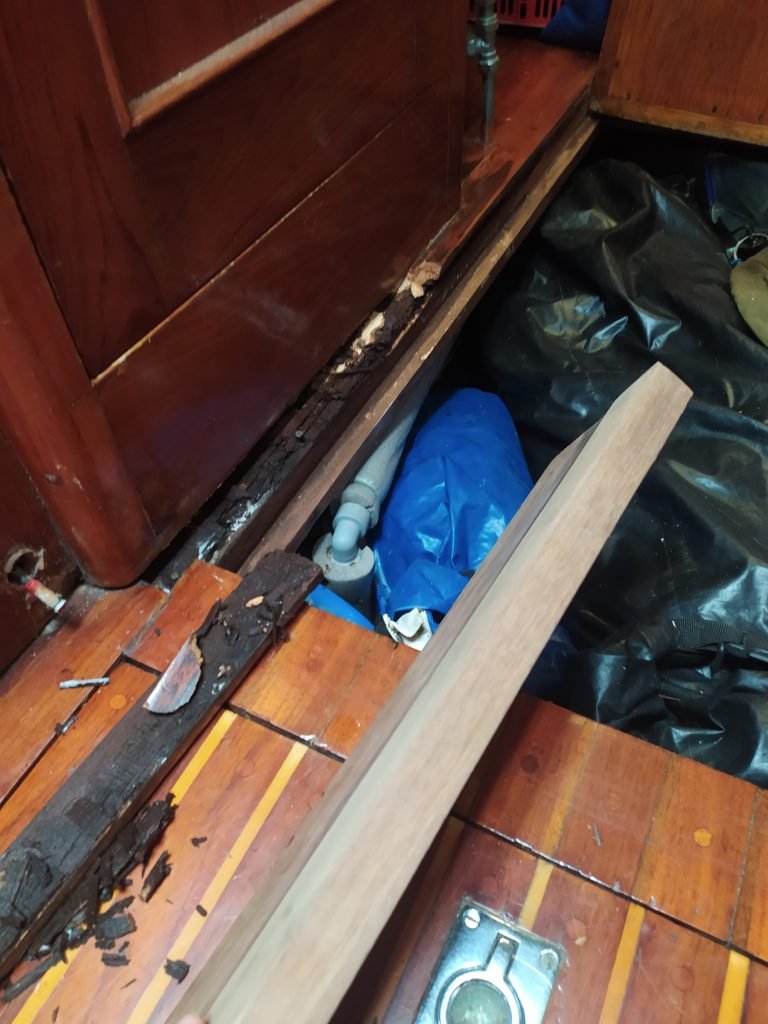

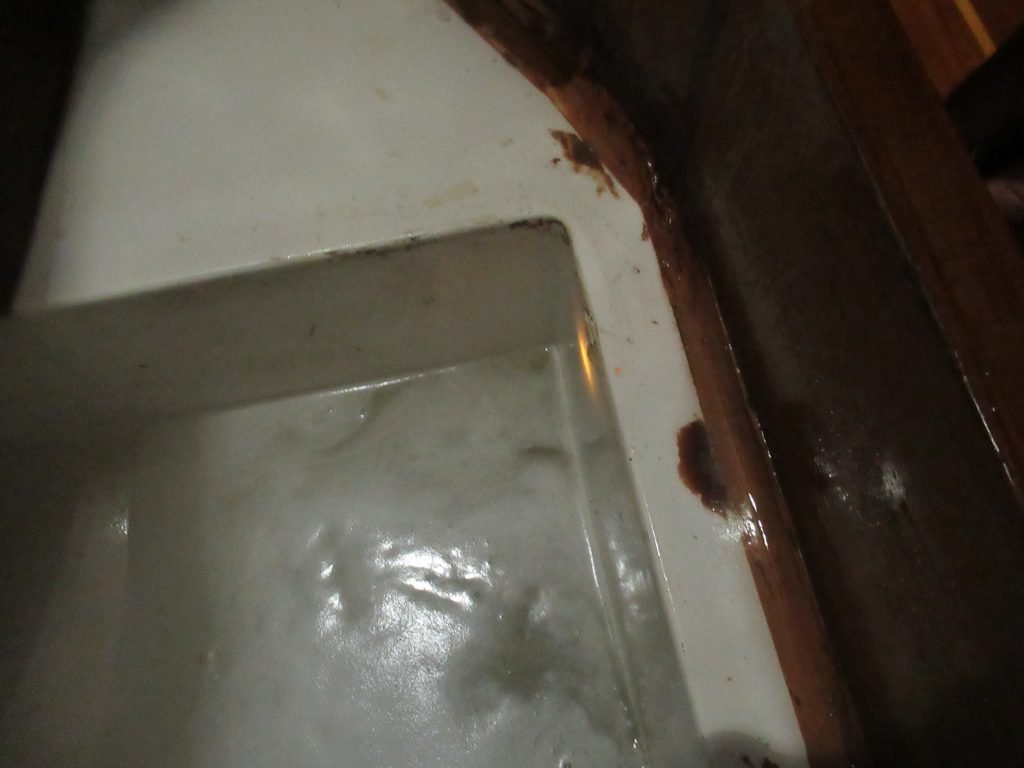
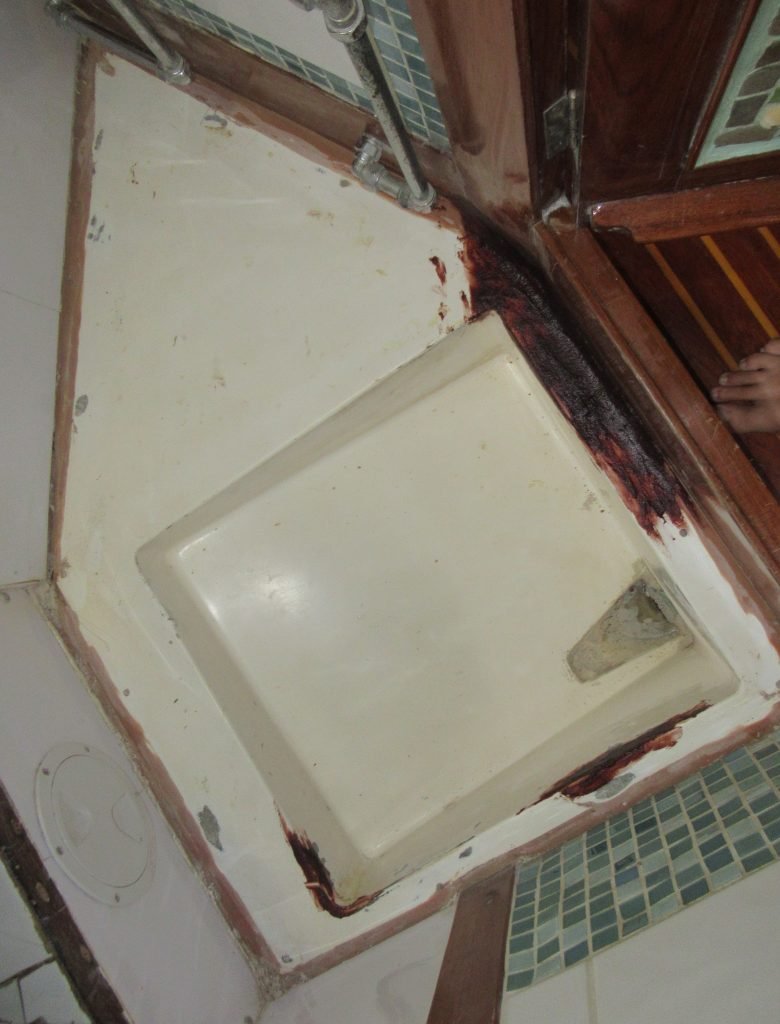

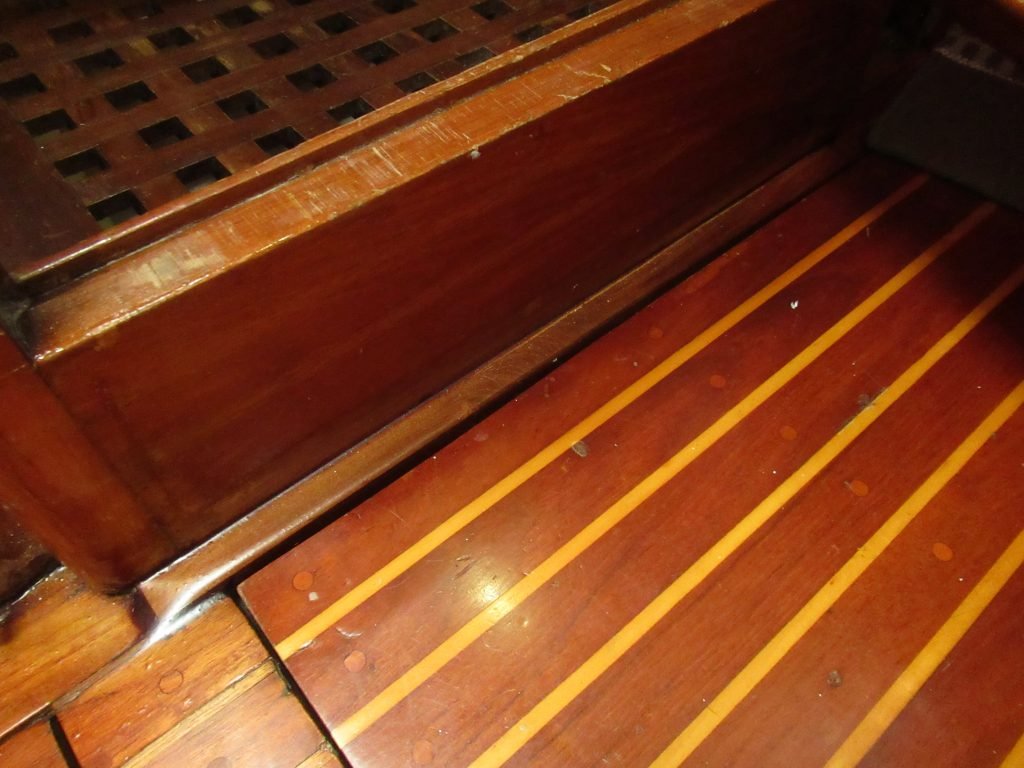
Next Time
We were enjoying our winter afloat on the river. Boat jobs were being completed and there were plenty of fun activities to keep us occupied.
The weather was colder and wetter than expected, but with enough warm days in between to even things out. Also, our Refleks heater was keeping things cosy inside.
Christmas was coming, although Covid restrictions were now spreading across the whole of Portugal. Check out the next blog to read about our experience.
To read Part II of a winter at anchor, please click here.
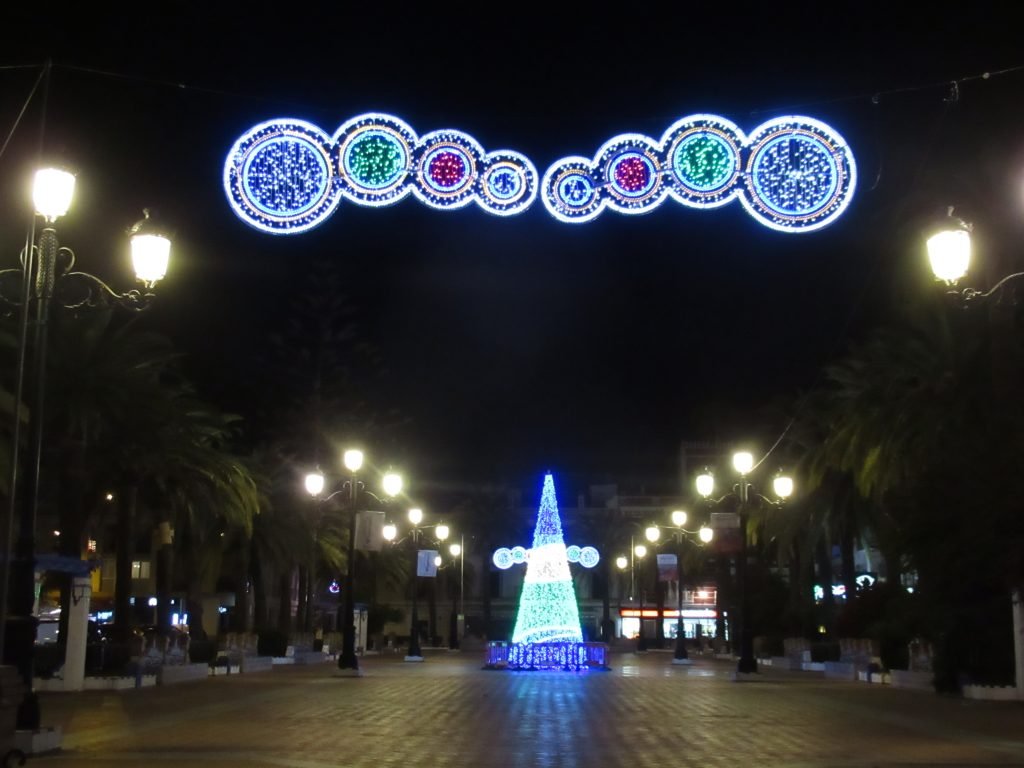
The Social Media Bit: Want to Follow Us?
If you’d like to follow us on other social media platforms (Facebook, Instagram and YouTube), you can do so by using these links:
Or use the link below to track our voyage on NoForeignLand.com.
And finally, you can sign up to receive email notifications of new blogs using the subscribe box at the bottom of this page.
Thank you from Nichola & Colin


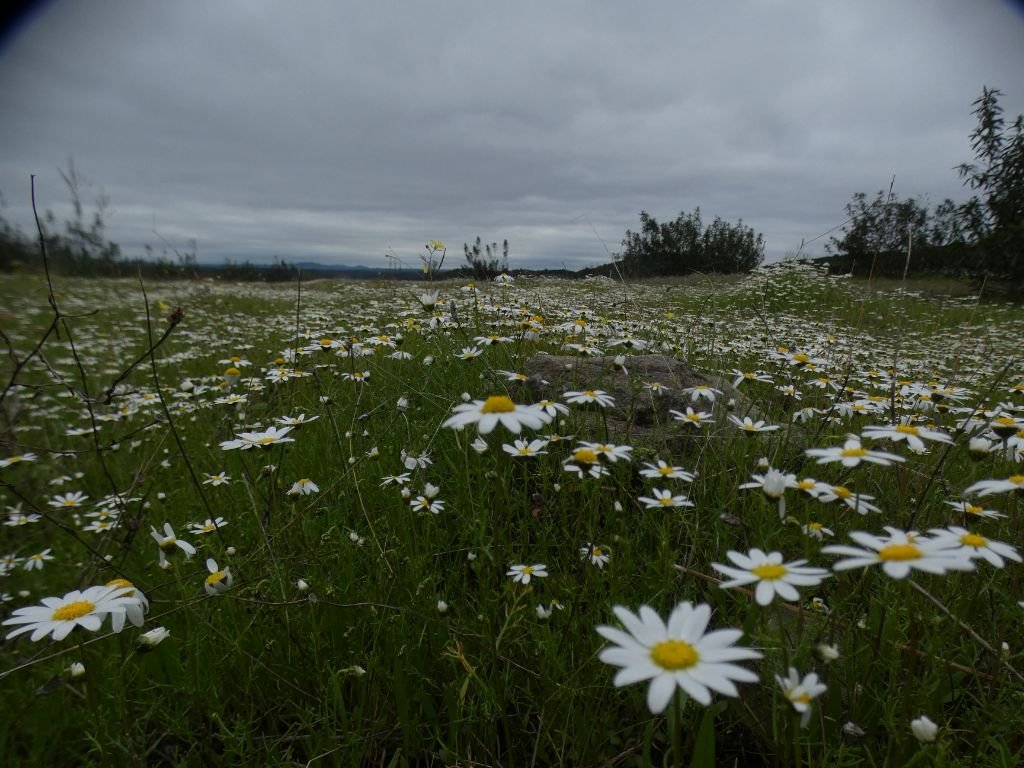
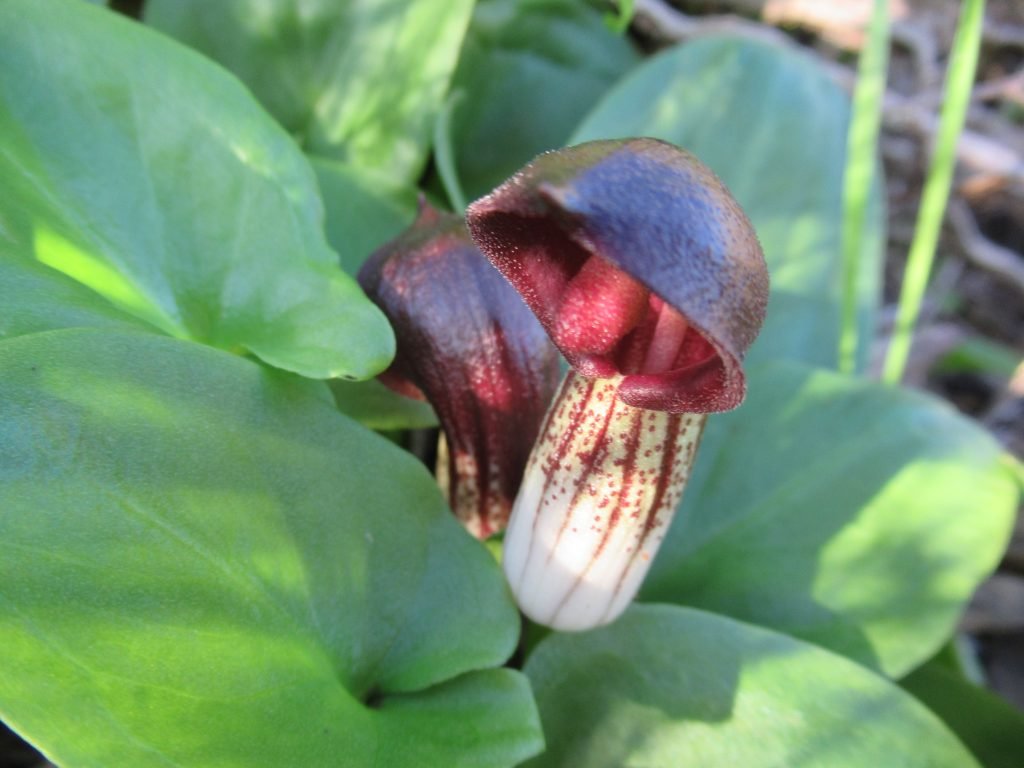
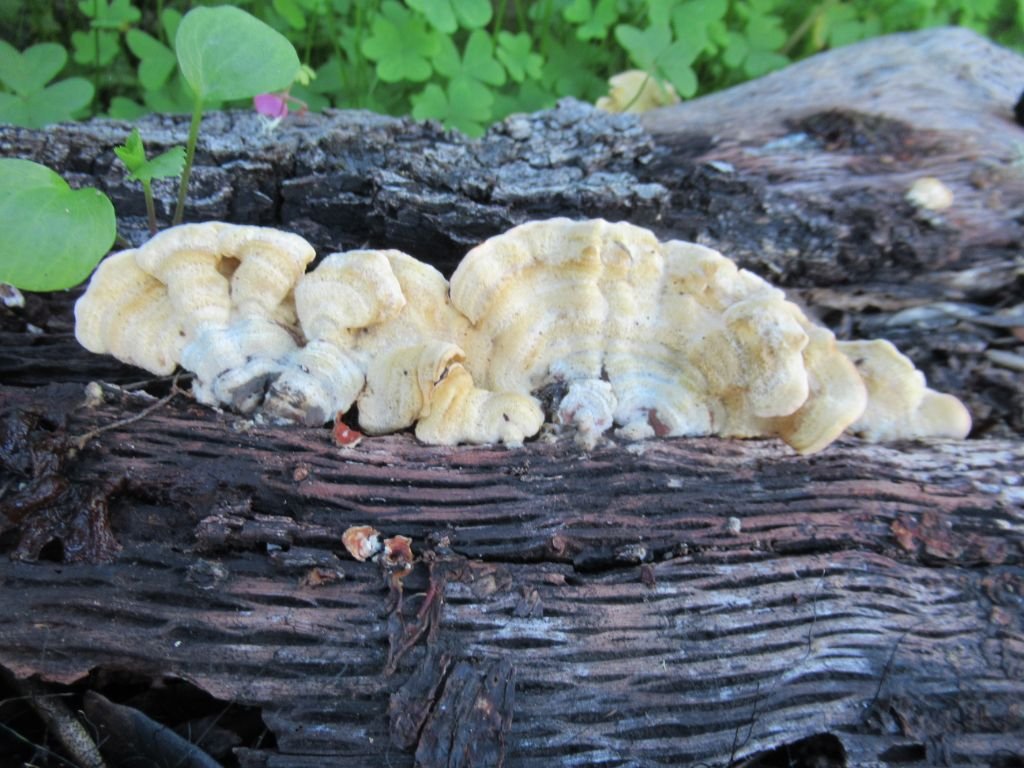


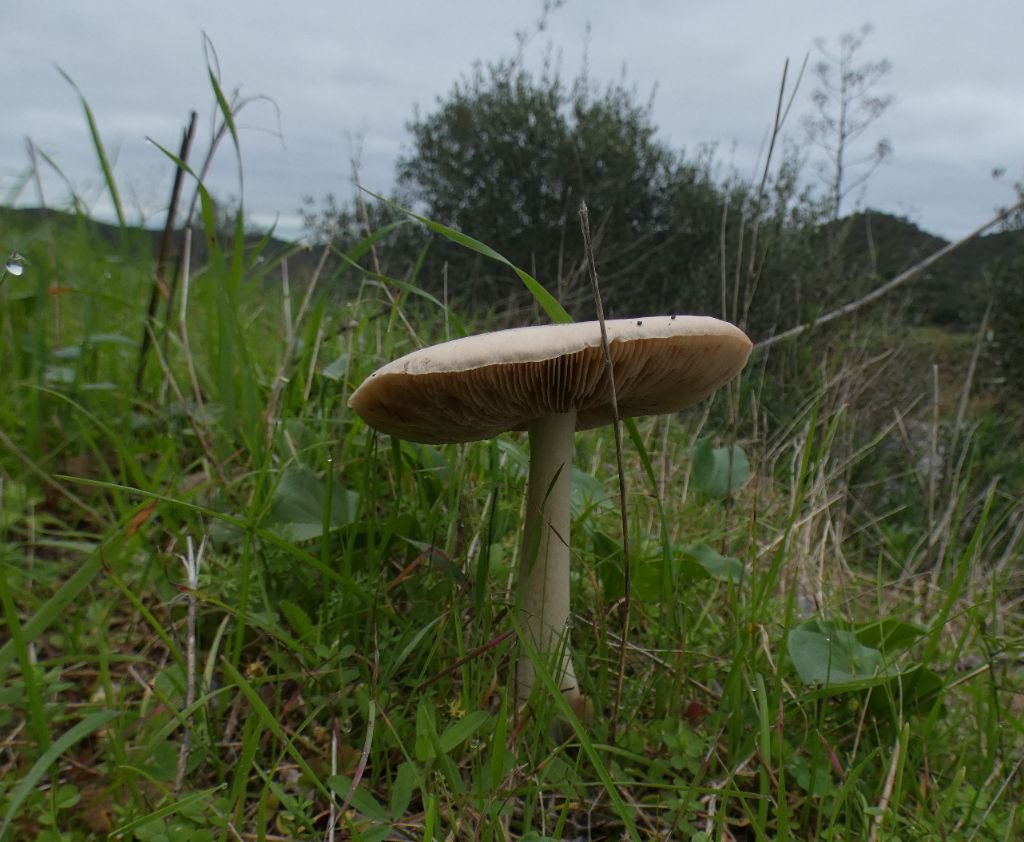
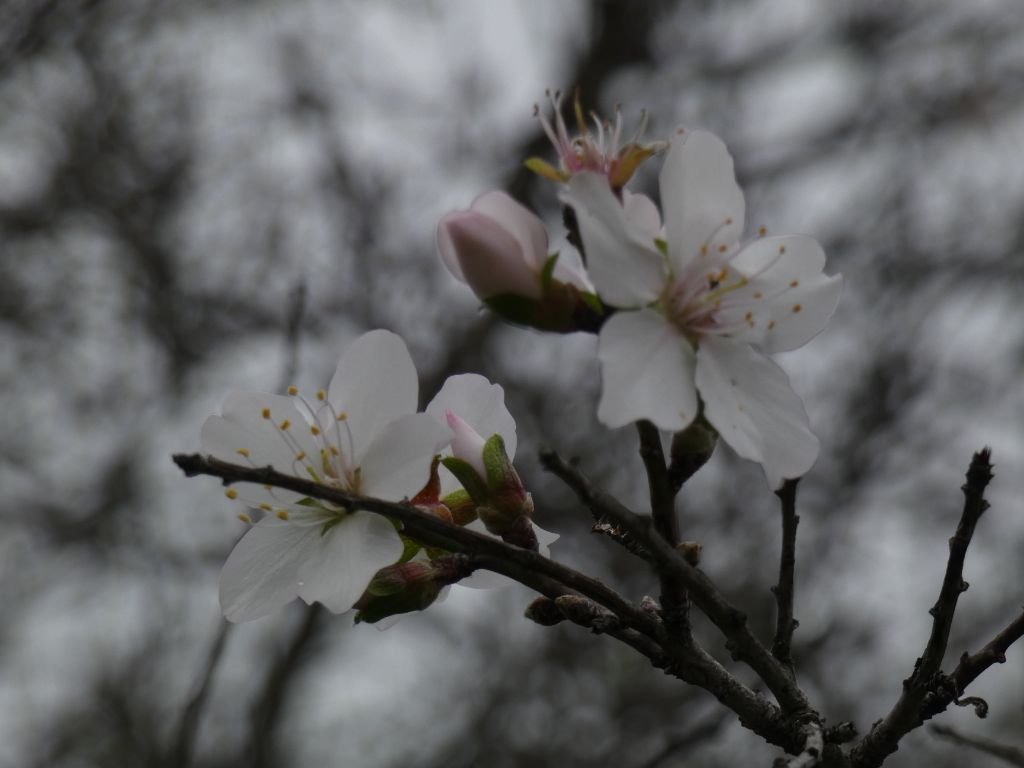

Thanks for the update. 🙂 And for posting your boat jobs list. I always think it is just us with the never-ending list. Actually, I’ve always suspected Charlie of making up stuff to do. And I love the photo effect for the new dinghy engine.
I reckon our menfolk have a few jobs on the list that once done, just get added back to the bottom again
Hey Nichola!
I loved that article! So inspiring, full of real-life, thank you for sharing your journey with us! I cannot wait to surf, go on a vacation as well. If the current situation gets better, I am waiting to go somewhere as well with https://yachting.com/en-gb.
Your blog gave us a really interesting idea and hacks to think about on our journey as well.
Have a great day!
V.